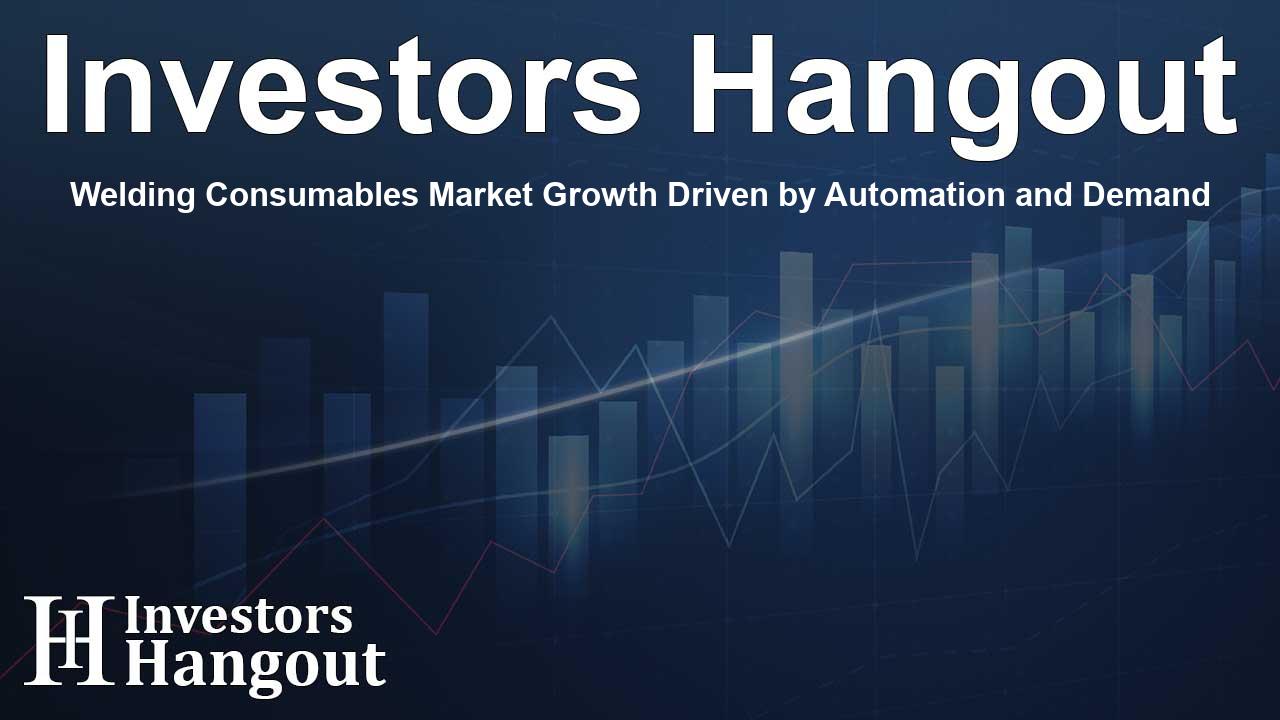Welding Consumables Market Growth Driven by Automation and Demand

Understanding the Welding Consumables Market Dynamics
The welding consumables market has experienced significant growth, with estimates suggesting it reached USD 16.79 billion and is projected to soar to USD 21.79 billion in the coming years. This growth is fueled by a myriad of factors, making welding consumables crucial in various sectors like infrastructure development, automotive manufacturing, and energy projects. As industries emphasize advanced materials and solutions ready for automation, the demand for welding consumables has never been higher.
Transformative Changes in the Market
The landscape of the welding consumables sector is continuously evolving due to innovations in material and technology, alongside sustainability efforts. The need for advanced welding consumables is pivotal in driving forward initiatives in construction and the evolving domain of transportation.
Impact of Offshore Wind Developments
The expansion of offshore wind installations has significantly influenced the demand for high-toughness welding consumables. Manufacturers are now producing specialized flux and wire systems that excel in extreme conditions and maintain integrity under severe pressure. As project activities move into more arduous offshore terrains, these high-performance consumables are likely to see a sustained increase in demand.
Automation in Response to Labor Market Challenges
As traditional labor markets tighten, manufacturers are embracing automation in welding processes. Robotics and AI are helping ensure high quality and efficiency. Consequently, this shift is amplifying the need for advanced flux-cored and metal-cored wires developed specifically for stability and reliability in automated settings.
Rising Steel Fabrication Demand in Asia-Pacific
The Asia-Pacific region is witnessing a construction boom, which dramatically drives the need for steel and, subsequently, welding consumables. Fabrication firms are increasingly investing in cutting-edge welding technologies capable of producing high-strength, seamless joints for heavy-duty applications. Moreover, a strong preference for certified electrodes in complex applications further accelerates the demand for premium welding consumables.
Segment Breakdown of the Welding Consumables Market
The welding consumables market is diverse and structured across various segments to meet the unique needs of different end users:
Product Type Analysis
Categories include:
- Stick Electrodes (SMAW)
- Welding Rods (TIG)
- Submerged Arc Welding (SAW) Flux & Wire Sets
- Flux-Cored Wires
- Welding Wires (GMAW/MIG/Solid Wires)
- Others (Oxy fuel Welding Rods, Welding Powder, Shielding Gases, Tips)
Material Type Overview
In terms of materials, the market includes:
- Steel Welding Consumables (Carbon, Stainless)
- Aluminum Welding Consumables
- Nickel-Based Welding Consumables
- Others (Copper, Titanium, Cobalt)
Techniques Utilized in Welding
The primary welding techniques are:
- Arc Welding (SMAW, MIG, TIG, SAW)
- Resistance Welding (Spot, Seam)
- Oxy-Fuel Welding
- Others (Laser Welding, Electron Beam Welding)
End-Use Sectors for Welding Consumables
Welding consumables are widely used across:
- Building & Construction
- Automotive & Transportation
- Shipbuilding & Offshore
- Energy Infrastructure
- Heavy Machinery & Industrial Equipment
- Aerospace & Defense
- Others (Railway, Consumer Goods)
Regional Insights on Market Performance
Asia-Pacific leads the demand for welding consumables, propelled by immense growth in shipbuilding and infrastructure projects, supported by local production capabilities. In contrast, North America focuses on technological advancement, particularly in robotics, to address industrial and energy sector needs. Europe emphasizes low-fume, certified materials, while the Middle East & Africa experience rapid growth driven by offshore initiatives.
Lastly, South America shows stable demand growth, largely due to investments in automotive and renewable energy sectors.
Competitive Landscape and Future Trends
The welding consumables market exhibits moderate competition, with top players heavily investing in research and development alongside automation to enhance operational efficiency. Companies are now prioritizing advanced robotic solutions and predictive maintenance technologies to adapt to market demands. With innovation continually shaping this space, the introduction of laser consumables and hybrid welding processes is likely to revolutionize industry dynamics.
Frequently Asked Questions
What are welding consumables?
Welding consumables are materials used in the welding process, such as rods, wires, and gases that facilitate the joining of metals.
How is the welding consumables market expected to grow?
Significant growth is projected due to increased demand across sectors, boosted by innovations in automation, materials, and processes.
What industries heavily rely on welding consumables?
Key industries include construction, automotive, aerospace, and energy infrastructure, where high-quality fabrication is essential.
What is driving automation in welding?
A tightening labor market and the demand for consistent quality are motivating manufacturers to adopt automated solutions in welding.
What regions are leading the welding consumables market?
Asia-Pacific leads in demand, with significant contributions from North America and Europe, transitioning to more technologically advanced materials and processes.
About The Author
Contact Logan Wright privately here. Or send an email with ATTN: Logan Wright as the subject to contact@investorshangout.com.
About Investors Hangout
Investors Hangout is a leading online stock forum for financial discussion and learning, offering a wide range of free tools and resources. It draws in traders of all levels, who exchange market knowledge, investigate trading tactics, and keep an eye on industry developments in real time. Featuring financial articles, stock message boards, quotes, charts, company profiles, and live news updates. Through cooperative learning and a wealth of informational resources, it helps users from novices creating their first portfolios to experts honing their techniques. Join Investors Hangout today: https://investorshangout.com/
The content of this article is based on factual, publicly available information and does not represent legal, financial, or investment advice. Investors Hangout does not offer financial advice, and the author is not a licensed financial advisor. Consult a qualified advisor before making any financial or investment decisions based on this article. This article should not be considered advice to purchase, sell, or hold any securities or other investments. If any of the material provided here is inaccurate, please contact us for corrections.
